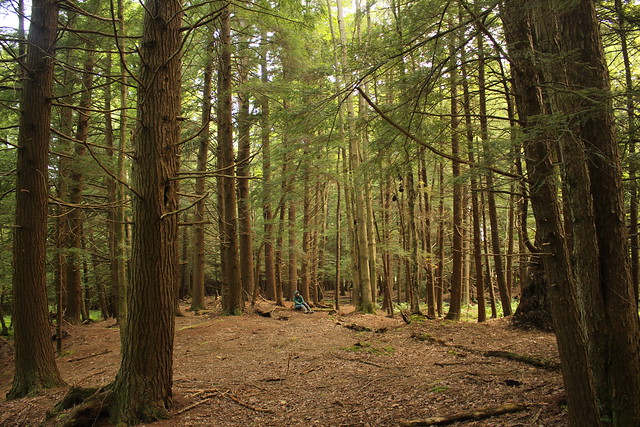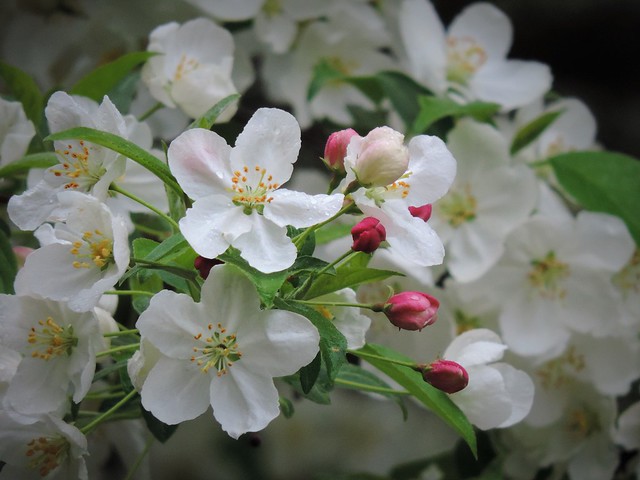The time between Thanksgiving and New Year’s Eve claims the title of “The Holiday Season”. However, I could make a case for spring as a strong runner up. I sit here both tired and energized from Volunteer Day, Audubon’s Earth Day celebration. After a morning of hard work on Audubon’s grounds with over 60 volunteers, I am going home to bake bread and dye Easter eggs. Purchasing and mailing birthday cards is also on the list. A friend talks of preparing her house for Passover. And when the sun peaks out on this spring day it seems the entire Earth is celebrating new life and new beginnings.
Holidays are days set aside from the ordinary to celebrate a significant event or tradition. They indicate what is important to us as individuals, families, and communities. We celebrate to remember, to honor, to share wisdom, to give thanks. Many holidays are set by culture or religion. As a lover of nature, and as a member of a nature center community, I wonder what holidays are important for us to celebrate.
Earth Day was April 22, a day where celebrants call for and act towards a healthy, sustainable environment. Next year, 2020 will mark the 50th anniversary of this call to action. Almost 100 years before the first Earth Day, a western settler was calling for the same thing in his burgeoning Nebraska town.

J. Sterling Morton used his position as newspaper editor to advocate for the planting of trees. As European settlers expanded westward, he saw trees as an important part of a healthy environment. They could provide erosion control, windbreaks, shade, and material for building and fuel. In 1872, the first tree planting celebration was held in Nebraska City. Arbor Day became a legal holiday in Nebraska in 1885 and spread to other states.
National Arbor Day, as well as Arbor Day in New York and Pennsylvania is celebrated on the last Friday in April. (April 26 this year.) Other states celebrate on different dates from January to November based on the best time to plant trees.
What a simple holiday. A call to plant trees. What a simple act. To plant a tree. But this simple act can have profound consequences.
It is no exaggeration to say that trees are life. Plants are the only thing that can harness the energy from the sun to turn nonliving ingredients into life. With trees, this life made of root, wood, leaf, sugar, flower, and fruit is a food source for hundreds of animals. Consider the birds eating the berries, the squirrels eating the acorns, the porcupine eating the living layer of bark. Also consider the over 500 species caterpillars eating the leaves of an oak tree. Just to name a few.
Trees also provide important ecological services. Trees help clean our air and water. They absorb carbon from our atmosphere and return oxygen. Elementary school science teaches us this. But research can quantify it.
For example, the science community found that one large tree can provide a day’s supply of oxygen for up to four people. They also found that roadside trees reduce nearby indoor air pollution by more than 50%. One acre of mature trees can absorb the carbon dioxide produced by a car driven 26,000 miles in one year. For more fun facts visit arborday.org.

I think we know intuitively that a world with more trees is better. Think of the difference between a tree-filled neighborhood and one empty of trees. The tree-filled neighborhood probably feels and looks better. But it really is better. Trees cool a city by up to 10°F by providing shade and releasing water vapor into the air. Office workers with a view of trees report significantly less stress. In Baltimore, a 10% increase in tree canopy corresponded to a 12% decrease in crime.
Perhaps the celebration of the earth in this holiday season was the reason a radio program was replaying an interview with Wangari Maathai. In her life she achieved academic, political, and environmental success. She was known as a champion of human rights, women’s empowerment, and the environment in her home country of Kenya as well as across Africa. Among other accolades, she won the 2004 Nobel Peace Prize, the first African women to do so. What did she do to fight for the rights of the impoverished — both the people and the land? Wangari Maathai planted trees.
She made the connection between human and environmental poverty. If the land is not healthy, neither are its people. Maathai founded the Green Belt Movement, which has contributed today to the planting of over 52 million trees.
Planting a tree is taking the long view. Most trees that are planted are small, only a few years old. It can be difficult to see the effect of planting a tree who’s trunk is thinner than your pinky finger. But with care, it will grow and be one of millions improving the world, for all of us.
“The best time to plant a tree was 20 years ago. The second best time is now” is a Chinese proverb. So in this holiday season I wish you a Merry Spring and Happy Arbor Day!
Katie Finch is a naturalist at Audubon.
Audubon Community Nature Center builds and nurtures connections between people and nature. ACNC is located just east of Route 62 between Warren and Jamestown. The trails are open from dawn to dusk as is Liberty, the Bald Eagle. The Nature Center is open from 10 a.m. until 4:30 p.m. daily except Sunday when it opens at 1 p.m. More information can be found online at auduboncnc.org or by calling (716) 569-2345.


Recent Comments